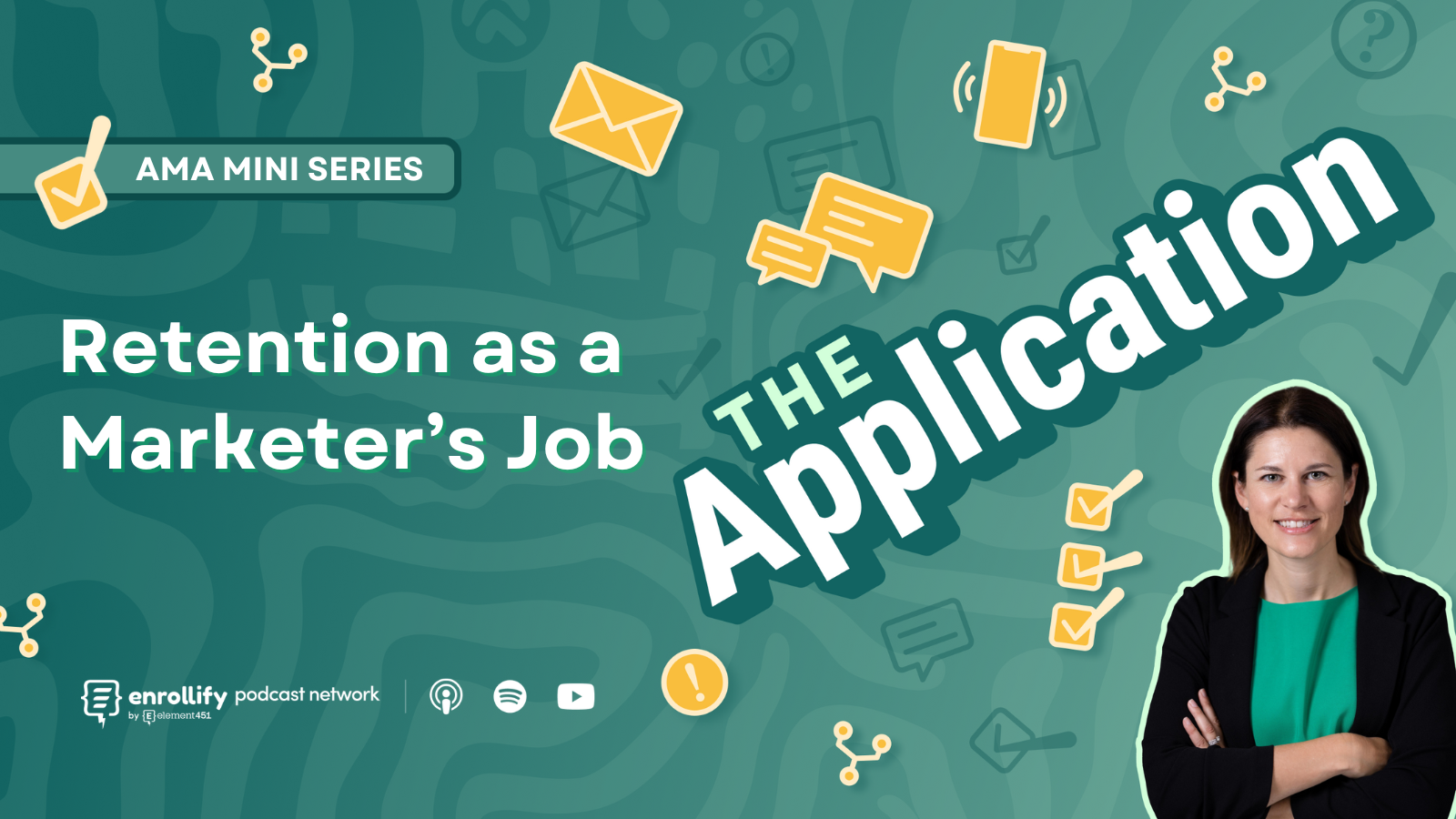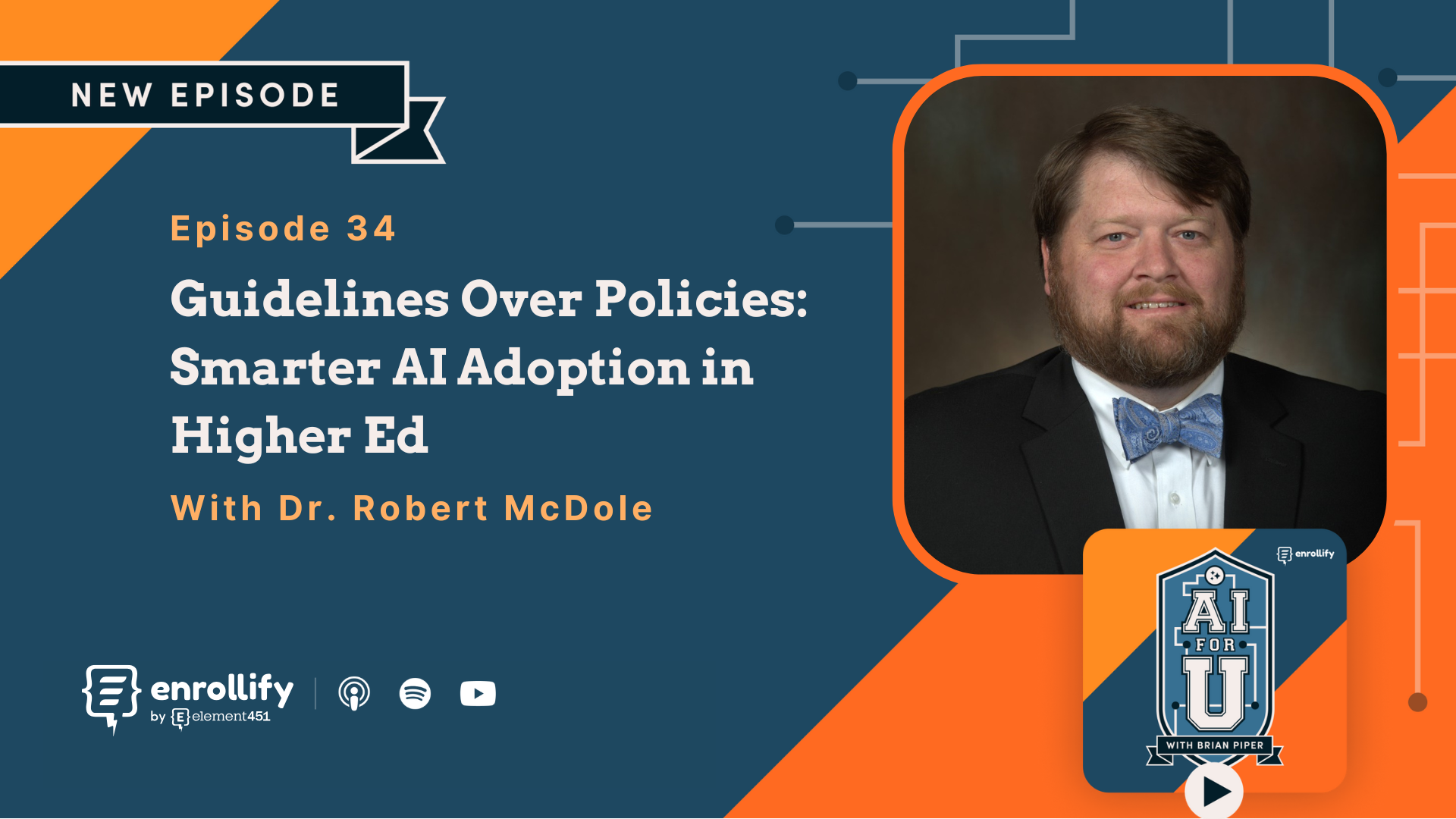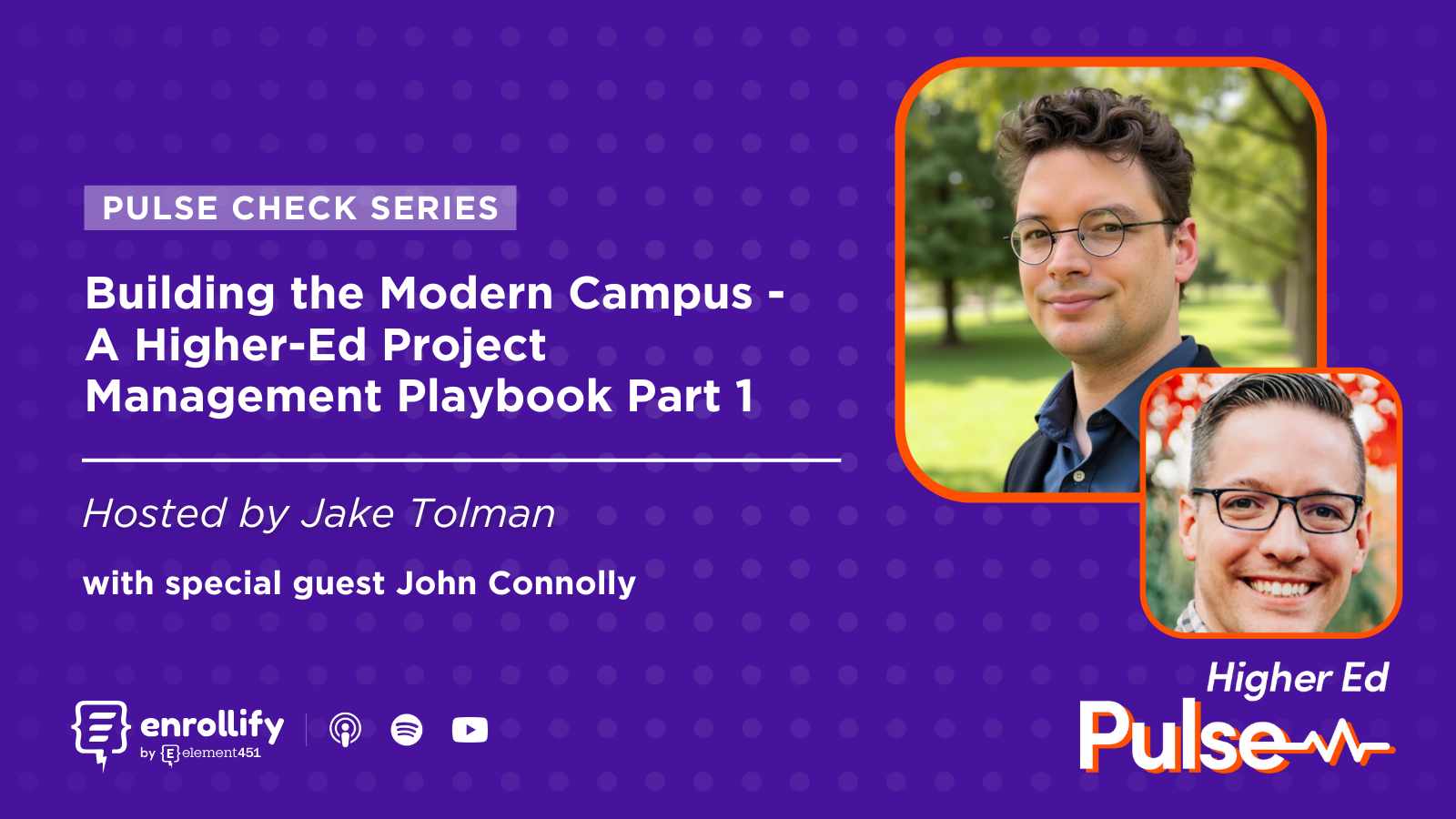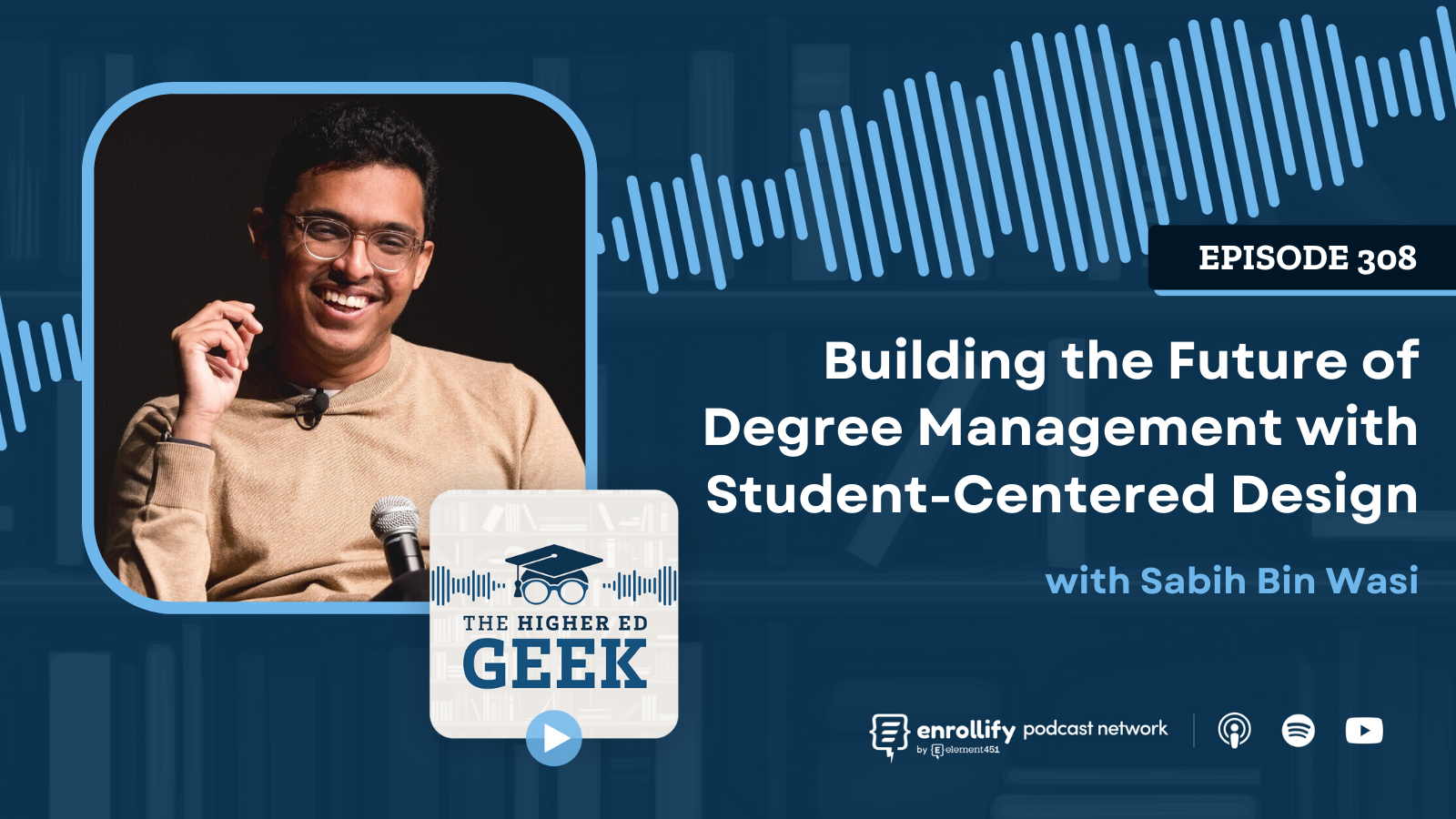About the Episode
Student workers, interns and ambassadors are often the face and voice of your institution, but does your program reflect your student population? Are you unconsciously creating barriers to recruiting a diverse pool of students to serve in these roles? In this episode, Jaime talks with Anice Barbosa, director of digital marketing at Wheaton College about how she overhauled her student ambassador program to create more opportunities for greater diversity in the students selected to participate.
In this honest and candid conversation, you’ll hear more about:
- Why it is important to have authentic content on your social media channels that better reflects the experiences of your student body
- Why even the most well-meaning marketers can unconsciously exclude marginalized and under-represented students
- How certain hiring practices create barriers to participation
- How to connect your work with institutional diversity, equity, inclusion and belonging goals
- How to measure the success of your efforts
Why Inclusivity Matters in Student Ambassador Programs
Anice Barbosa began her journey of rethinking Wheaton College’s student ambassador program after receiving feedback that it lacked diversity and failed to fully represent the student body. As a person of color, Anice was struck by how her department’s existing recruitment and retention practices unintentionally excluded students from underrepresented groups. This prompted her to reflect on her privilege and biases, driving her to take meaningful steps toward equity.
Anice emphasized that diversity is not just about checking boxes or meeting quotas—it’s about creating a culture of belonging, amplifying underrepresented voices, and showcasing the authentic experiences of all students. She shared how intentional changes to recruitment, onboarding, and retention processes led to a program that better reflects Wheaton’s vibrant and diverse community.
Transforming the Recruitment Process
Anice highlighted how Wheaton previously relied on narrow recruitment practices, such as sourcing referrals only from current ambassadors or specific departments. This approach unintentionally perpetuated homogeneity in the ambassador team.
To address this, her team:
- Opened Job Postings Early and Publicly: Ensuring all students had access to apply, regardless of connections.
- Expanded Referral Sources: Engaged faculty from diverse departments, club leaders, and multicultural offices to broaden the pool of candidates.
- Eliminated Barriers: Removed the requirement for polished portfolios, instead asking candidates to complete simple, accessible assignments like recording a short video clip.
- Provided Resources: Invested in shared equipment like cameras, phones, and lighting to ensure students without access to technology could still excel.
Retaining Ambassadors and Cultivating Belonging
Retention became a central focus of the revamped program. Wheaton prioritized building relationships with ambassadors, creating community, and offering support. Key retention strategies included:
- Regular Check-Ins: Weekly meetings to discuss work, personal challenges, and career goals.
- Flexibility: Allowing students to prioritize academics when needed, fostering a culture of understanding.
- Community Building: Hosting outings and offering mentorship to ambassadors.
- Budget for Equity: Allocating funds for equipment and increasing ambassador wages to reflect the value of their work.
These efforts have paid off. Anice shared how the team now has a group chat where students eagerly count down the days until they return to campus—a testament to the sense of belonging and excitement the program has fostered.
The Impact of an Inclusive Ambassador Team
The results of these changes are evident in the content Wheaton’s ambassadors produce. With a more diverse team, the social media content now reflects the full spectrum of student life on campus—from arts and athletics to advocacy and mental health initiatives. Prospective students and parents have responded positively, often sharing that the authentic content helped them feel connected to Wheaton before they even visited.
A Commitment to Ongoing Improvement
Anice emphasized that building equitable and inclusive practices is an ongoing journey. She continuously gathers feedback from ambassadors, students, and the broader community to identify new opportunities for improvement. She also works with leadership and cross-campus groups to advocate for systemic changes, such as raising wage caps for all student workers.
Through this work, Anice has not only transformed Wheaton’s ambassador program but also set an example of how higher ed marketers can embrace equity and inclusion as core values in their work.
Confessions of a Higher Ed CMO is sponsored by our friends at Nectir - the instant chat tool that engages campus communities and reduces burnout. This community and engagement platform is purpose-built for higher education and connects campus classrooms through conversation. In just 12 months, tens of thousands of students, instructors, and administrators at partner campuses have made Nectir an integral part of their daily learning experience. Learn more about how you can get Nectir on your campus here.
Confessions of a Higher Ed CMO is a part of the Enrollify Podcast Network. If you like this podcast, chances are you’ll like other Enrollify shows too!
Our podcast network is growing by the month and we’ve got a plethora of marketing, admissions, and higher ed technology shows that are jam packed with stories, ideas, and frameworks all designed to empower you to be a better higher ed professional. Our shows feature a selection of the industry’s best as your hosts. Learn from Mickey Baines, Zach Busekrus, Jeremy Tiers, Corynn Myers, Jaime Gleason and many more.
Learn more about The Enrollify Podcast Network at podcasts.enrollify.org. Our shows help higher ed marketers and admissions professionals find their next big idea — come and find yours!















